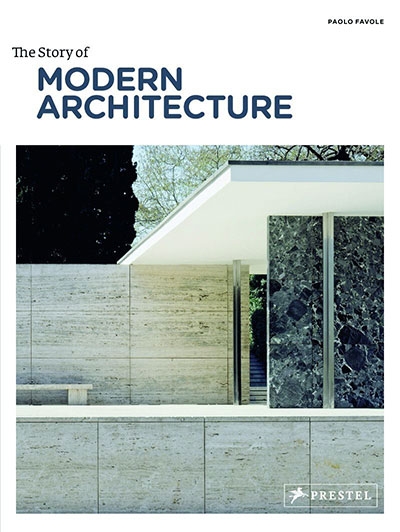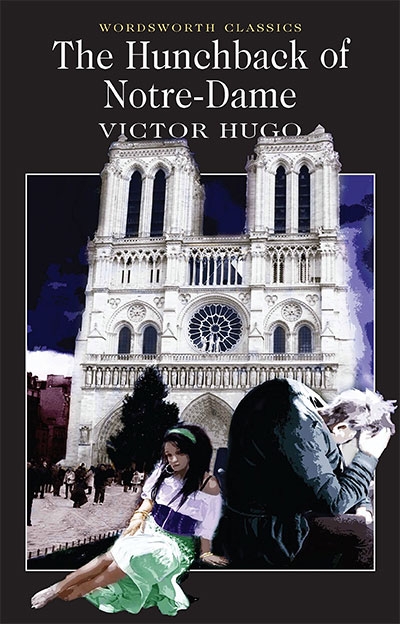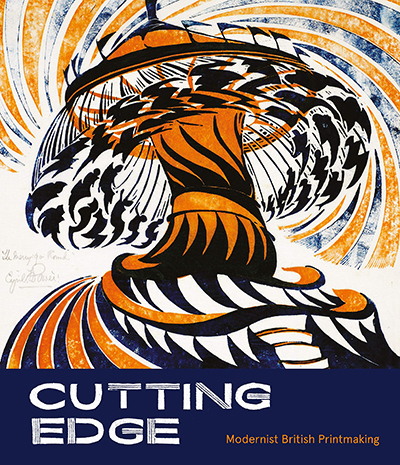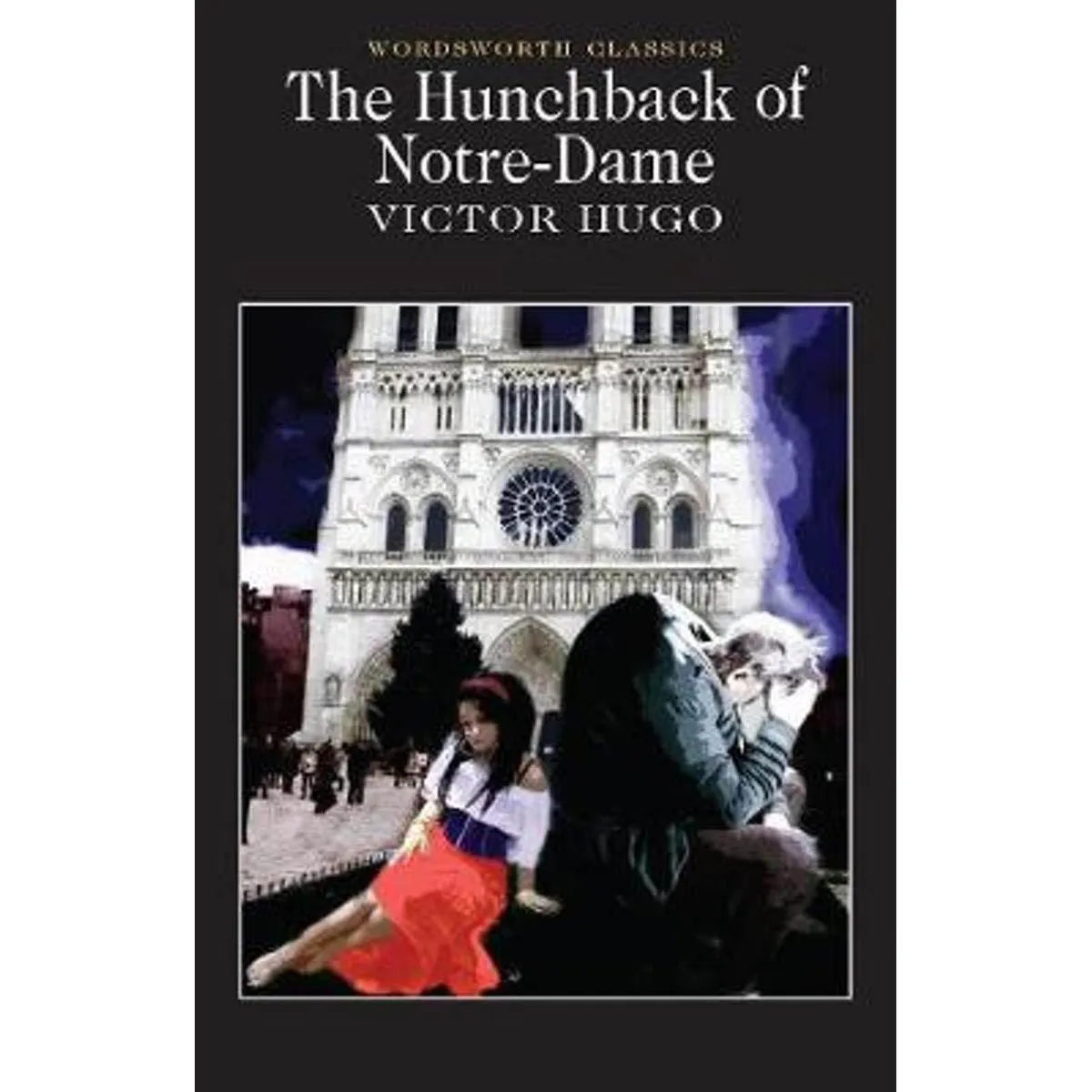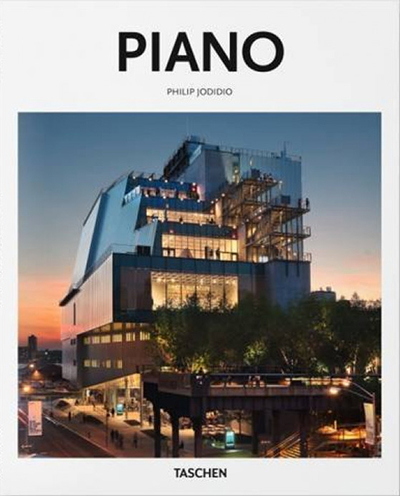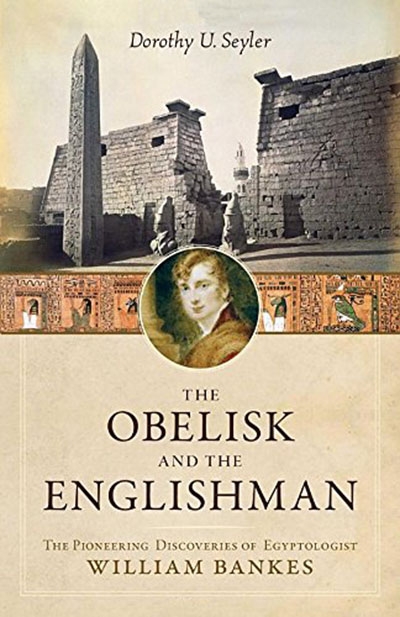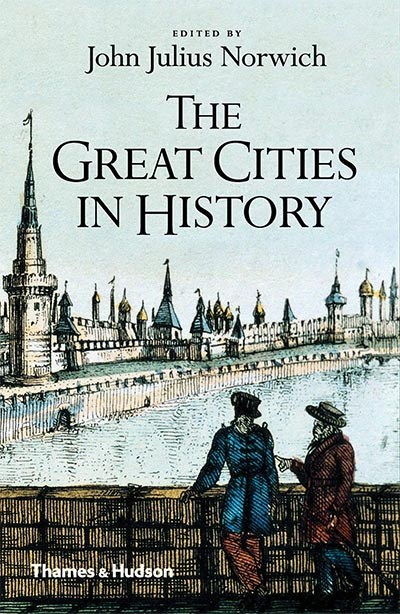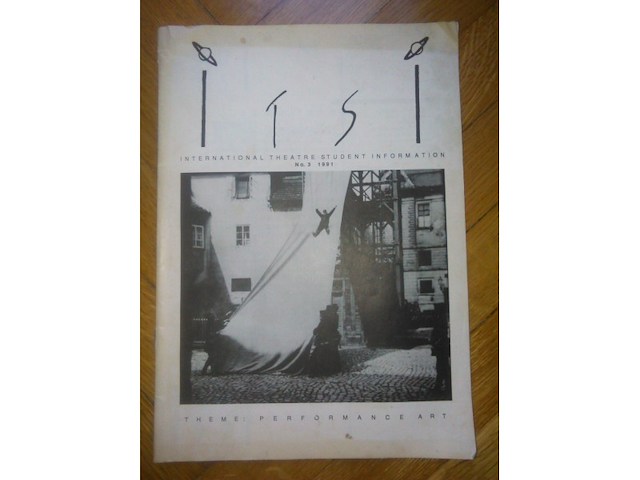Pratite promene cene putem maila
- Da bi dobijali obaveštenja o promeni cene potrebno je da kliknete Prati oglas dugme koje se nalazi na dnu svakog oglasa i unesete Vašu mail adresu.
1-9 od 9 rezultata
Broj oglasa
Prikaz
1-9 od 9
1-9 od 9 rezultata
Prikaz
Prati pretragu "slicni:46825307 STORY OF MODERN ARCHITECTURE"
Vi se opustite, Gogi će Vas obavestiti kad pronađe nove oglase za tražene ključne reči.
Gogi će vas obavestiti kada pronađe nove oglase.
Režim promene aktivan!
Upravo ste u režimu promene sačuvane pretrage za frazu .
Možete da promenite frazu ili filtere i sačuvate trenutno stanje
Aktivni filteri
-
Cena
500 din - 1,499 din
-
Kolekcionarstvo i umetnost chevron_right Knjige
The Story Of Modern Architecture Part of an accessibly written and generously illustrated series on architecture through the ages, this book features modern architecture's most important architects and buildings, interior and exterior photographs, detailed images, drawings and plans. A style driven by huge technological advances, modernism is architecture's most diverse period. It encompasses buildings as varied as the Sydney Opera House and the Empire State skyscraper. This volume helps readers sort through the numerous movements, schools of design, and architectural styles of Modernism. Chronologically arranged, it includes some of twentieth century's most exciting buildings.
-
Kolekcionarstvo i umetnost chevron_right Knjige
Modernism In Serbia: The Elusive Margins Of Belgrade Architecture, 1919-1941 Modernism in Serbia is the first comprehensive account of an almost forgotten body of work that once defined regional modernism at its best. The book reconstructs the story of Serbian modernism as a local history within a major movement and views the buildings designed in Belgrade in the 1920s and 1930s as part of a larger cultural phenomenon. Because so many of the buildings discussed are disintegrating or have been destroyed or altered beyond recognition, the book serves not only as a documentary and critical study but also as a preservation resource. Most of the photographs and plans have never been published outside of Serbia, if at all. In restoring this work to its rightful place in the history of modern architecture, the book also sheds new light on a number of other stories. These include the influence of Le Corbusier and of the Yugoslav avant-garde movement Zenitism and the impact of international modern movements on the theoretical underpinnings of Serbian modernism. One of the subplots follows the story of the Group of Architects of the Modern Movement in Belgrade and its four founding members, Milan Zlokovic, Branislav Kojic, Jan Dubovy, and Dusan Babic. Through an examination of their work and that of other modern architects, most notably Dragisa Brasovan and Nikola Dobrovic, the book discusses the identity of Serbian modernism as it was established in the period from 1925 to 1940. The book also identifies those buildings that represent the purest examples of Serbian modernism and analyzes the qualities that make them quintessentially local forms while part of the larger modernist movement. Modernism in Serbia is a co-publication of the Harvard Design School and MIT Press. Prikaži više
-
Kolekcionarstvo i umetnost chevron_right Knjige
The Hunchback Of Notre Dame Set in 1482, Victor Hugo’s powerful novel of ‘imagination, caprice and fantasy’ is a meditation on love, fate, architecture and politics, as well as a compelling recreation of the medieval world at the dawn of the modern age. In a brilliant reworking of the tale of Beauty and the Beast, Hugo creates a host of unforgettable characters – amongst them, Quasimodo, the hunchback of the title, hopelessly in love with the gypsy girl Esmeralda, the satanic priest Claude Frollo, Clopin Trouillefou, king of the beggars, and Louis X1, King of France. Over the entire novel, both literally and symbolically, broods the Cathedral of Notre-Dame. Vivid characters and memorable set-piece action scenes combine to bring the past to life in this story of love, lust, betrayal, doom and redemption.
-
Kolekcionarstvo i umetnost chevron_right Knjige
Cutting Edge: Modernist British Printmaking The Grosvenor School of Modern Art was founded by the influential teacher, painter and wood-engraver, Iain McNab, in 1925. Situated in London's Pimlico district the school played a key role in the story of modern British printmaking between the wars. The Grosvenor School artists received critical acclaim in their time that continued until the late 1930s under the influence of Claude Flight who pioneered a revolutionary method of making the simple linocut to dynamic and colourful effect. Cyril Power, a lecturer in architecture at the school, and Sybil Andrews, the School Secretary, were two of Flight's star students. Whilst incorporating the avant-garde values of Cubism, Futurism and Vorticism, the Grosvenor School printmakers brought their own unique interpretation of the contemporary world to the medium of linocut in images that are strikingly familiar to this day and are included in the print collections of the world's major museums, including the British Museum, the MoMA New York and the Australian National Gallery. This new book which accompanies an exhibition at Dulwich Picture Gallery illustrates over 120 linocuts, drawings and posters by Grosvenor School artists and its thematic layout focuses on the key components which made up their dynamic and rhythmic visual imagery. For the first time, three Australian printmakers, Dorrit Black, Ethel Spowers and Eveline Syme - who played a major part in the Grosvenor School story - are included in a major museum exhibition outside of Australia. Prikaži više
-
Kolekcionarstvo i umetnost chevron_right Knjige
Hunchback of Notre-Dame CLASSICS Šifra artikla: 226810 Isbn: 9781853260681 Autor : Victor Hugo Izdavač : WORDSWORTH With an Introduction and Notes by Keith Wren, University of Kent at Canterbury. Set in 1482, Victor Hugo s powerful novel of imagination, caprice and fantasy is a meditation on love, fate, architecture and politics, as well as a compelling recreation of the medieval world at the dawn of the moder... Detaljnije With an Introduction and Notes by Keith Wren, University of Kent at Canterbury. Set in 1482, Victor Hugo s powerful novel of imagination, caprice and fantasy is a meditation on love, fate, architecture and politics, as well as a compelling recreation of the medieval world at the dawn of the modern age. In a brilliant reworking of the tale of Beauty and the Beast, Hugo creates a host of unforgettable characters amongst them, Quasimodo, the hunchback of the title, hopelessly in love with the gypsy girl Esmeralda, the satanic priest Claude Frollo, Clopin Trouillefou, king of the beggars, and Louis XI, King of France. Over the entire novel, both literally and symbolically, broods the Cathedral of Notre-Dame. Vivid characters and memorable set-piece action scenes combine to bring the past to life in this story of love, lust, betrayal, doom and redemption. Ime/Nadimak Email adresa Poruka POŠALJI Kategorija CLASSICS Autor Victor Hugo Težina specifikacija 0.5 kg Izdavač WORDSWORTH Pismo Latinica Povez Broš Godina 1993 Format 12x19 Strana 480 Obavezni kolačići čine stranicu upotrebljivom omogućavanjem osnovnih funkcija kao što su navigacija stranicom i pristup zaštićenim područjima. Sajt koristi kolačiće koji su neophodni za pravilno funkcionisanje naše veb stranice kako bi se omogućile određene tehničke funkcije i tako vam pružilo pozitivno korisničko iskustvo. Statistički kolačići anonimnim prikupljanjem i slanjem podataka pomažu vlasnicima web lokacija da razumeju kako posetioci komuniciraju sa stranicom. To su kolačići koji omogućavaju web analitiku sajta, odnosno analizu upotrebe naših stranica i merenje prometa, koje sajt sprovodi u cilju poboljšanja kvaliteta i sadržaja ponuđenih usluga. Marketinški kolačići se koriste za praćenje posetilaca putem web stranice. Koriste se za prikazivanje relevantnih oglasa korisnicima i podsticanje da učestvuju, što je važno za nezavisne izdavače i oglašavače. Sajt koristi Google Analytics kolačiće ads/ga-audiences i collect, te Facebook kolačiće fr i tr.
-
Kolekcionarstvo i umetnost chevron_right Knjige
Piano Building virtuoso: The exploration and iconoclasm of an Italian master While some architects have a signature style, Renzo Piano seeks to apply coherent ideas to extraordinarily different projects. His buildings impress as much for their individual impact as for their diversity of scale, material, and form. Piano rose to international prominence with his codesign of the Pompidou Center in Paris, described by The New York Times as a building that "turned the architecture world upside down." Since then, he has continued to craft many high-profile cultural spaces, including the Modern Wing of the Art Institute of Chicago; the Morgan Library Renovation and Expansion in New York; and, most recently, the Whitney Museum of American Art, an asymmetric nine-story structure in Manhattan's Meatpacking District with both indoor and outdoor galleries. In New York and London, the Renzo touch has also transformed the skyline with the towers of the New York Times Building and the Shard, the tallest building in the European Union. This essential introduction travels from Osaka, Japan, to Bern, Switzerland, and through many cities, structures, and islands in between, to explore the staggering scope of the Renzo Piano repertoire. From the "inside-out" Pompidou to the airy shells of the Tjibaou Cultural Center in Noumea, New Caledonia, this is a thrilling journey through the beauty of architecture, where, in Piano's own words, "each time, it is like life starting all over again." Prikaži više
-
Kolekcionarstvo i umetnost chevron_right Knjige
The Obelisk And The Englishman: The Pioneering Discoveries Of Egyptologist William Bankes William John Bankes (1786 1855) was a pioneer in the nascent study of the language, history, and civilization of ancient Egypt. At the Abydos Temple he discovered the King List a wall of cartouches listing Egyptian kings in chronological order which was vital to the decoding of Egyptian hieroglyphs. At Philae he uncovered a fallen obelisk, which he arranged to be transported back to England. And in modern-day Jordan he was the first European to make sketches and site plans of the lost city of Petra. Bankes s life was rich and full, and his discoveries have proven to be quite valuable and influential. But, living in an era when homosexuality was a capital offense, he was persecuted for being gay and threatened with imprisonment and execution. His decision to travel and pursue his love of art and architecture went against his father s wishes that he follow in his footsteps and become a politician. Despite such obstacles, Bankes s pioneering work on ancient temples and artifacts now enriches the knowledge of modern Egyptologists, and his art collection and decorative talents can be enjoyed by those who visit his home, a National Trust estate with the obelisk from Philae still raised on the south lawn. Enhanced by many of Bankes's drawings and paintings, this engaging story is full of vivid detail about the beginnings of Egyptology, Regency England, and a fascinating individual, and it sets the record straight about Bankes's crucial role in setting the stage for the work of later scholars. Prikaži više
-
Kolekcionarstvo i umetnost chevron_right Knjige
The Great Cities In History A work of history, but also about art and architecture, trade and commerce, travel and exploration, economics and politics, this is above all a book about people and how, over the millennia, they have managed to live closely together. From the origins of urbanization in Mesopotamia to the global metropolises of today, great cities have marked the development of humankind – Babylon and Nineveh, Athens and Rome, Istanbul and Venice, Timbuktu and Samarkand, their very names are redolent both of history and romance. The Great Cities in History tells their story from early Uruk and Thebes to Jerusalem and Alexandria. Then the fabulous cities of the first millennium: Damascus and Baghdad in the days of the Caliphates, Teotihuacan and Maya Tikal in Central America, and Chang’an, capital of Tang Dynasty China. The medieval world saw the rise of powerful cities: Palermo and Paris in Europe, Benin in Africa and Angkor of the Khmer. In the early modern world, we journey to Islamic Isfahan and Agra, and Prague and Amsterdam in their heyday, before arriving at the phenomenon of the contemporary mega-city: London and New York, Tokyo and Barcelona, Los Angeles and São Paulo. A galaxy of more than fifty distinguished authors, including Jan Morris, Colin Thubron, Simon Schama, Orlando Figes, Felipe Fernandez-Armesto, Misha Glenny, Adam Zamoyski and A. N. Wilson, evoke the character of each place and explain the reasons for its success, seeing what each city would have been like during its golden age. Prikaži više
ITSI - Intenational theatre students information, broj 3, 1991 Theme: Performance art Temat casopisa posvecen umetnosti performansa. 47 strana. Robert Wilson, Joseph Beuys, avangarda, Stelarc, performans, konceptuala, konceptualna umetnost... Robert Wilson (born October 4, 1941) is an American experimental theater stage director and playwright who has been described by The New York Times as `[America]`s – or even the world`s – foremost vanguard `theater artist.``[1] He has also worked as a choreographer, performer, painter, sculptor, video artist, and sound and lighting designer. Wilson is best known for his collaboration with Philip Glass and Lucinda Childs on Einstein on the Beach, and his frequent collaborations with Tom Waits. In 1991, Wilson established The Watermill Center, `a laboratory for performance` on the East End of Long Island, New York, regularly working with opera and theater companies, as well as cultural festivals. Wilson `has developed as an avant-garde artist specifically in Europe amongst its modern quests, in its most significant cultural centers, galleries, museums, opera houses and theaters, and festivals`.[2] Early life and education Wilson was born in Waco, Texas, the son of Loree Velma (née Hamilton) and D.M. Wilson, a lawyer.[3] He had a difficult youth as the gay son of a conservative family.[4] `When I was growing up, it was a sin to go to the theater. It was a sin if a woman wore pants. There was a prayer box in school, and if you saw someone sinning you could put their name in the prayer box, and on Fridays everyone would pray for those people whose names were in the prayer box.`[5] He was stuttering and taken to a local dance instructor called Bird `Baby` Hoffman, who helped him overcome his stutter.[6] After attending local schools, he studied business administration at the University of Texas from 1959 to 1962. He moved to Brooklyn, New York in 1963 to change fields, study art and architecture. At some point he went to Arizona to study architecture with Paolo Soleri at his desert complex.[7] Wilson found himself drawn to the work of pioneering choreographers George Balanchine, Merce Cunningham, and Martha Graham, among others.[8] He engaged in therapeutic theater work with brain-injured and disabled children in New York. He received a BFA in architecture from the Pratt Institute in 1965.[9] He directed a `ballet for iron-lung patients where the participants moved a fluorescent streamer with their mouths while the janitor danced dressed as Miss America`.[6] During this period, he also attended lectures by Sibyl Moholy-Nagy (widow of László Moholy-Nagy), and studied painting with artist George McNeil.[citation needed] Career Theater Act IV, Scene 3C `Space Machine` from Einstein on the Beach in Amsterdam, 2013 In 1968, he founded an experimental performance company, the Byrd Hoffman School of Byrds (named for a teacher who helped him manage a stutter while a teenager). With this company, he directed his first major works, beginning with 1969`s The King of Spain and The Life and Times of Sigmund Freud. He began to work in opera in the early 1970s, creating Einstein on the Beach with composer Philip Glass and choreographer Lucinda Childs. This work brought the artists worldwide renown. Following Einstein, Wilson worked increasingly with major European theaters and opera houses.[10] For the New York debut of his first opera, the Metropolitan Opera allowed Wilson to rent the house on a Sunday, when they did not have a production, but would not produce the work.[11] In 1970, Wilson and a group of collaborators, including choreographer Andy deGroat and the dancer and actor Sheryl Sutton,[12] devised the `silent opera` Deafman Glance in Iowa City, where it premiered at the Center for New Performing Arts on December 15. The large cast of the premiere production of Deafman Glance included Raymond Andrews and Ana Mendieta. The show subsequently traveled to the Nancy Festival in France and to the Brooklyn Academy of Music. It later opened in Paris, championed by the designer Pierre Cardin.[11] The Surrealist poet Louis Aragon loved it and published a letter to the Surrealist poet André Breton (who had died in 1966),[11] in which he praised Wilson as: `What we, from whom Surrealism was born, dreamed would come after us and go beyond us`.[13] In 1975, Wilson dissolved the Byrds and started to use professional actors.[6] In 1983/84, Wilson planned a performance for the 1984 Summer Olympics, the CIVIL warS: A Tree Is Best Measured When It Is Down; the complete work was to have been 12 hours long, in 6 parts. The production was only partially completed; the full event was canceled by the Olympic Arts Festival, due to insufficient funds.[14] In 1986, the Pulitzer Prize jury unanimously selected the CIVIL warS for the drama prize, but the supervisory board rejected the choice and gave no drama award that year.[15] In 1990 alone, Wilson created four new productions in four different West German cities: Shakespeare`s King Lear in Frankfurt, Chekhov`s Swan Song in Munich, an adaptation of Virginia Woolf`s Orlando in West Berlin, and The Black Rider a collaboration by Wilson, Tom Waits and William S. Burroughs, in Hamburg.[14] In 1997, he was awarded the Europe Theatre Prize.[16] In 1998, Wilson staged August Strindberg`s A Dream Play, at Stockholms Stadsteater, Sweden. It later headlined festivals in Recklinghausen, Nice, Perth, Bonn, Moscow, New York and London.[17][18] In 2010 Wilson was working on a new stage musical with composer (and long-time collaborator) Tom Waits and the Irish playwright, Martin McDonagh.[19] His theatrical production of John Cage`s Lecture on Nothing, which was commissioned for a celebration of the Cage centenary at the 2012 Ruhrtriennale,[20] had its U.S. premiere in Royce Hall, UCLA, by the Center for the Art of Performance.[21] Wilson performed Lectures on Nothing in its Australian premiere at the 2019 Supersense festival at the Arts Centre Melbourne.[22] In 2013 Wilson, in collaboration with Mikhail Baryshnikov and co-starring Willem Dafoe, developed The Old Woman, an adaptation of the work by the Russian author Daniil Kharms. The play premiered at MIF13, Manchester International Festival.[23] Wilson wrote that he and Baryshnikov had discussed creating a play together for years, perhaps based on a Russian text.[24] The final production included dance, light, singing and bilingual monolog. Since 1999, Wilson has premiered nine theatrical works in Berlin. By contrast, as of 2013, his last commission in the United States was 21 years ago.[25] As of 2010, he continued to direct revivals of his most celebrated productions, including The Black Rider in London, San Francisco, Sydney, Australia, and Los Angeles; The Temptation of St. Anthony in New York and Barcelona; Erwartung in Berlin; Madama Butterfly at the Bolshoi Opera in Moscow; and Wagner`s Der Ring des Nibelungen at Théâtre du Châtelet in Paris.[10] Wilson also directs all Monteverdi operas for the opera houses of La Scala in Milan and the Palais Garnier in Paris.[26] In 2021 Wilson directed a revival of Shakespeare`s The Tempest at the Ivan Vazov National Theatre in Sofia, Bulgaria.[27] In 2022 he directed UBU, a theatrical performance, premiered at Es Baluard Museu in Palma.[28] Visual art and design In addition to his work for the stage, Wilson has created sculpture, drawings, and furniture designs. Exhibited in December 1976 at the Paula Cooper Gallery, Wilson`s storyboards were described by one critic as `serial art, equivalent to the slow-motion tempo of [Wilson`s] theatrical style. In drawing after drawing after drawing, a detail is proposed, analyzed, refined, redefined, moved through various positions.`[29] He won the Golden Lion at the 1993 Venice Biennale for a sculptural installation. [citation needed] In 2004, Ali Hossaini offered Wilson a residency at the television channel LAB HD.[30] Since then Wilson, with producer Esther Gordon and later with Matthew Shattuck, has produced dozens of high-definition videos known as the Voom Portraits. Collaborators on this well-received project included the composer Michael Galasso, the late artist and designer Eugene Tsai, fashion designer Kevin Santos, and lighting designer Urs Schönebaum. In addition to celebrity subjects, sitters have included royalty, animals, Nobel Prize winners and hobos.[31] In 2011, Wilson designed an art park dedicated to the Finnish designer Tapio Wirkkala (1915–1985), situated in the Arabianranta district of Helsinki. His plans for the rectangular park feature a central square divided into nine equally sized fields separated by bushes. Each field will be installed with objects related to the home. For example, one unit will consist of a small fireplace surrounded by stones that serve as seating. The park will be lit by large, lightbox-style lamps build into the ground and by smaller ones modeled on ordinary floor lamps.[32] In 2013 American pop singer Lady Gaga announced that she would collaborate with Wilson as part of her ARTPOP project. He subsequently designed the set for her 2013 MTV Video Music Awards performance.[33] Wilson also suggested that Gaga pose for his Voom Portraits.[33] Knowing he had an upcoming residency as guest curator at the Louvre, Wilson chose themes from the museum`s collection, all dealing with death. They shot the videos in a London studio over three days, Gaga standing for 14 or 15 hours at a time.[33] Called `Living Rooms,` the resulting exhibition included two video works: one inspired by Jacques-Louis David`s The Death of Marat, hung in the painting galleries, and another in which Lady Gaga brings to life a painting by Ingres.[11] In the Louvre`s auditorium, Wilson hosted and took part in a series of performances, conversations, film screenings, and discussions.[34] The centerpiece of the residency is a room filled with objects from the artist`s personal collection in New York, including African masks, a Shaker chair, ancient Chinese ceramics, shoes worn by Marlene Dietrich and a photo of Wilson and Glass taken in the early 1980s by Robert Mapplethorpe.[11] Personal life Wilson in 2014 Wilson lives in New York. As of 2000, he estimated that he `spends 10 days a year at his apartment in New York`.[35] For many years he was romantically involved with Andy de Groat, a dancer and choreographer with whom he collaborated in the 1970s.[36] Style Wilson is known for pushing the boundaries of theater. His works are noted for their austere style, very slow movement, and often extreme scale in space or in time. The Life and Times of Joseph Stalin was a 12-hour performance, while KA MOUNTain and GUARDenia Terrace was staged on a mountaintop in Iran and lasted seven days.[citation needed] Language Language is one of the most important elements of theater and Robert Wilson feels at home with commanding it in many different ways. Wilson`s impact on this part of theater alone is immense. Arthur Holmberg, professor of theater at Brandeis University, says that `In theatre, no one has dramatized the crisis of language with as much ferocious genius as Robert Wilson.`[37]: 41 Wilson makes it evident in his work that whats and whys of language are terribly important and cannot be overlooked. Tom Waits, acclaimed songwriter and collaborator with Wilson, said this about Wilson`s unique relationship with words: Words for Bob are like tacks on the kitchen floor in the dark of night and you`re barefoot. So Bob clears a path he can walk through words without getting hurt. Bob changes the values and shapes of words. In some sense they take on more meaning; in some cases, less.[37]: 43 Wilson shows the importance of language through all of his works and in many varying fashions. He credits his reading of the work of Gertrude Stein and listening to recordings of her speaking with `changing [his] way of thinking forever.`[38] Wilson directed three of Stein`s works in the 1990s: Doctor Faustus Lights the Lights (1992), Four Saints in Three Acts (1996), and Saints and Singing (1998). Wilson considers language and, down to its very ingredients, words, as a sort of `a social artifact`.[37]: 44 Not only does language change with time but it changes with person, with culture. Using his experience of working with mentally handicapped children and enlisting the collaboration of Christopher Knowles, a renowned autistic poet, has allowed Wilson to attack language from many views. Wilson embraces this by often `juxtaposing levels of diction – Miltonic opulence and contemporary ling, crib poetry and pre-verbal screams` in an attempt to show his audience how elusive language really is and how ever-changing it can be.[37]: 44 Visually showing words is another method Wilson uses to show the beauty of language. Often his set designs, program covers, and posters are graffiti`d with words. This allows the audience to look at the `language itself` rather than `the objects and meanings it refers to.`.[37]: 45 The lack of language is essential to Wilson`s work as well. In the same way an artist uses positive and negative space, Wilson uses noise and silence. In working on a production of King Lear, Wilson inadvertently describes his necessity of silence: The way actors are trained here is wrong. All they think about is interpreting a text. They worry about how to speak words and know nothing about their bodies. You see that by the way they walk. They don`t understand the weight of a gesture in space. A good actor can command an audience by moving one finger.[37]: 49 This emphasis on silence is fully explored in some of his works. Deafman Glance is a play without words, and his adaptation of Heiner Müller`s play Quartet [de] contained a fifteen-minute wordless prolog. Holmberg describes these works stating, Language does many things and does them well. But we tend to shut our eyes to what language does not do well. Despite the arrogance of words – they rule traditional theatre with an iron fist – not all experience can be translated into a linguistic code.[37]: 50 Celebrated twentieth century playwright Eugène Ionesco said that Wilson `surpassed Beckett` because `[Wilson`s] silence is a silence that speaks`.[37]: 52 This silence onstage may be unnerving to audience members but serves a purpose of showing how important language is by its absence. It is Wilson`s means of answering his own question: `Why is it no one looks? Why is it no one knows how to look? Why does no one see anything on stage?`[37]: 52 Another technique Wilson uses is that of what words can mean to a particular character. His piece, I was sitting on my patio this guy appeared I thought I was hallucinating, features only two characters, both of whom deliver the same stream-of-consciousness monolog. In the play`s first production one character was `aloof, cold, [and] precise` while the other `brought screwball comedy … warmth and color … playful[ness]`.[37]: 61 The different emphases and deliveries brought to the monolog two different meanings; `audiences found it hard to believe they heard the same monologue twice.`[37]: 61 Rather than tell his audience what words are supposed to mean, he opens them up for interpretation, presenting the idea that `meanings are not tethered to words like horses to hitching posts.`[37]: 61 Movement Movement is a key element in Wilson`s work. As a dancer, he sees the importance of the way an actor moves onstage and knows the weight that movement bears. When speaking of his `play without words` rendition of Ibsen`s When We Dead Awaken, Wilson says: I do movement before we work on the text. Later we`ll put text and movement together. I do movement first to make sure it`s strong enough to stand on its own two feet without words. The movement must have a rhythm and structure of its own. It must not follow the text. It can reinforce a text without illustrating it. What you hear and what you see are two different layers. When you put them together, you create another texture.[37]: 136 With such an emphasis on movement, Wilson even tailors his auditions around the necessity of it. In his auditions, `Wilson often does an elaborate movement sequence` and `asks the actor to repeat it.`[37]: 136 Thomas Derrah, an actor in the CIVIL warS, found the audition process to be baffling: `When I went in, [Wilson] asked me to walk across the room on a count of 31, sit down on a count of 7, put my hand to my forehead on a count of 59. I was mystified by the whole process`.[37]: 137 To further cement the importance of movement in Wilson`s works, Seth Goldstein, another actor in the CIVIL warS, stated `every movement from the moment I walked onto the platform until I left was choreographed to the second. During the scene at table all I did was count movements. All I thought about was timing.`[37]: 137 When it comes time to add the text in with movement, there is still much work to be done. Wilson pays close attention to the text and still makes sure there is enough `space around a text` for the audience to soak it up.[37]: 139 At this point, the actors know their movements and the time in which they are executed, allowing Wilson to tack the actions onto specific pieces of text. His overall goal is to have the rhythm of the text differ from that of the movement so his audience can see them as two completely different pieces, seeing each as what it is. When in the text/movement stage, Wilson often interrupts the rehearsal, saying things like `Something is wrong. We have to check your scripts to see if you put the numbers in the right place.`[37]: 139 He goes on to explain the importance of this: I know it`s hell to separate text and movement and maintain two different rhythms. It takes time to train yourself to keep tongue and body working against each other. But things happen with the body that have nothing to do with what we say. It`s more interesting if the mind and the body are in two different places, occupying different zones of reality.[37]: 139 These rhythms keep the mind on its toes, consciously and subconsciously taking in the meanings behind the movement and how it is matching up with the language. Similar to Wilson`s use of the lack of language in his works, he also sees the importance that a lack of movement can have. In his production of Medea, Wilson arranged a scene in which the lead singer stood still during her entire aria while many others moved around her. Wilson recalls that `she complained that if I didn`t give her any movements, no one would notice her. I told her if she knew how to stand, everyone would watch her. I told her to stand like a marble statue of a goddess who had been standing in the same spot for a thousand years`.[37]: 147 Allowing an actor to have such stage presence without ever saying a word is very provocative, which is precisely what Wilson means to accomplish with any sense of movement he puts on the stage. Lighting Wilson believes that `the most important part of theatre` is light.[37]: 121 He is concerned with how images are defined onstage, and this is related to the light of an object or tableau. He feels that the lighting design can really bring the production to life. The set designer for Wilson`s the CIVIL warS, Tom Kamm, describes his philosophy: `a set for Wilson is a canvas for the light to hit like paint.`[37]: 121 He explains, `If you know how to light, you can make shit look like gold. I paint, I build, I compose with light. Light is a magic wand.`[37]: 121 Wilson is `the only major director to get billing as a lighting designer` and is recognized by some as `the greatest light artist of our time`.[37]: 122 He designs with light to be flowing rather than an off-and-on pattern, thus making his lighting `like a musical score.`[37]: 123 Wilson`s lighting designs feature `dense, palpable textures` and allow `people and objects to leap out from the background.[37]: 123 In his design for Quartett, Wilson used four hundred light cues in a span of only ninety minutes.[37]: 122 He is a perfectionist, persisting to achieve every aspect of his vision. A fifteen-minute monolog in Quartett took two days for him to light while a single hand gesture took nearly three hours.[37]: 126 This attention to detail expresses his conviction that, `light is the most important actor on stage.`[37]: 128 In a conversation with theater expert Octavian Saiu, Wilson was asked whether he is disturbed by the fact that his style is often imitated. His response was that `the world is a library`, and therefore every artist is free to borrow from other artists.[39] Props Wilson`s interest in design extends to the props in his productions, which he designs and sometimes participates in constructing. Whether it is furniture, a light bulb, or a giant crocodile, Wilson treats each as a work of art in its own right. He demands that a full-scale model of each prop be constructed before the final one is made, in order `to check proportion, balance, and visual relationships` on stage.[37]: 128 Once he has approved the model, the crew builds the prop, and Wilson is `renowned for sending them back again and again and again until they satisfy him`.[37]: 128 He is so strict in his attention to detail that when Jeff Muscovin, his technical director for Quartett, suggested they use an aluminum chair with a wood skin rather than a completely wooden chair, Wilson replied: No, Jeff, I want wood chairs. If we make them out of aluminum, they won`t sound right when they fall over and hit the floor. They`ll sound like metal, not wood. It will sound false. Just make sure you get strong wood. And no knots.[37]: 129 Such attention to detail and perfectionism usually resulted in an expensive collection of props. `Curators regard them as sculptures`[37]: 129 and the props have been sold for prices ranging from `$4,500 to $80,000.`[40]: 113 Exhibitions Extensive retrospectives have been presented at the Centre Georges Pompidou in Paris (1991) and the Boston Museum of Fine Arts (1991). He has presented installations at the Stedelijk Museum Amsterdam, Museum Boymans-van Beuningen, Rotterdam (1993), London`s Clink Street Vaults (1995), Neue Nationalgalerie (2003), and the Solomon R. Guggenheim Museum in New York and the Guggenheim Museum Bilbao.[41] His tribute to Isamu Noguchi was exhibited at the Seattle Art Museum and his Voom Portraits exhibition traveled to Hamburg, Milan, Miami, and Philadelphia.[10] In 2012, Times Square Arts invited Wilson to show selections from his three-minute video portraits on more than twenty digital screens that lined Times Square.[41][42] In 2013 he participated at the White House Biennial / Thessaloniki Biennale 4. He collaborated with artist Bettina WitteVeen on an exhibition space based on her photography book `Sacred Sister.` The book consisted of photos of women that WitteVeen captured in Indonesia and Southeast Asia in 1995. The exhibition space was set up in 2003 at Art Basel Miami Beach, and was also composed of layers of autumn leaves on the floor of a studio.[43] Wilson is represented exclusively and worldwide by RW Work, Ltd. (New York), and his gallerist in New York City is Paula Cooper Gallery. The Watermill Center In 1991 Wilson established The Watermill Center on the site of a former Western Union laboratory on the East End of Long Island, New York. Originally styled as `a laboratory for performance`, The Watermill Center operates year-round artist residencies, public education programs, exhibitions, and performances. The center is situated within a ten-acre (4.0 ha) campus of gardens and designed landscape, and contains numerous works of art collected by Wilson.[35] Europe Theatre Prize In 1997 he was awarded the V Europe Theatre Prize, in Taormina, with the following motivation: The Jury of the fifth Europe Theatre Prize has unanimously awarded the Prize to Robert Wilson in recognition of his thirty years` work aimed at creating a personal reinvention of scenic art that has overturned the temporal dimension and retraced the spatial one. He refused to render a mere production of reality and offered an abstract or informal vision of the text and also redefined the roles, whenever possible, through global intervention in the creation of his performances where he was author, director, performer, scenographer and magic light designer. Architect by profession, the artist pursued an indisciplinary language that did not ignore the visual arts in enhancing the importance of the image and, restoring the support of music, he approached dance and simultaneously attempted to find a pure harmonious value in the spoken word, in an ideal tension towards a form of total theater. It has been said that his works can be considered part of a single opus in continual evolution that constitutes the synthesis. During his career Wilson has confronted himself with different genres and drawn them closer thanks to the conformity of language. He has executed classical works and specially written works and for this reasons he has stimulated the interest of eminent writers, such as William Burroughs and Heiner Müller establishing a particular bond with him. He has dedicated himself to teaching non theatrical literary works often adapted into monologs interpreted by eminent actors, such as Madeleine Renaud and Marianne Hoppe. He has ventured into the production of opera and ballet, he has created musicals sui generis in collaboration with illustrious emerging personalities, he has promoted performances especially with Christopher Knowles, he has directed spectacular fashion parades. His prolific activity as designer and visual artist can be seen in his paintings, sculptures, installations, graphic works, exhibitions. He was awarded the major prize at the Venice Biennale. Nothing new can be achieved without changing the conceptions of organization. He was a decisive promoter of coproduction of festivals since the `70s, of the creation of prototype-performances that could be translated in various nations with new casts, and also of the creation of serial works to be completed later in production studios. Thanks are due to him for the embrace between different nations, languages, styles and traditions. Even when using bigger and bigger and more and more international teams of collaborators Wilson has never renounced making his own imprint of perfectionist in a developing opera. He has to be accredited with the Watermill Centre, center of experimentation and training where his work as a teacher has helped him in retain an inexhaustible flow of fresh ideas from the contact with the young people.[44] Legacy and awards 1971 and 1980 Guggenheim Fellowship awards 1971 Drama Desk Award for Outstanding Director for Deafman Glance 1975 Rockefeller Foundation Fellowship 1981 Asian Cultural Council Fellowship 1986 Nomination for the Pulitzer Prize for Drama[45] 1987 Subject of documentary Robert Wilson and the Civil Wars, directed by Howard Brookner[46] 1993 Golden Lion for Sculpture from the Venice Biennale[47] 1996 The Dorothy and Lillian Gish Prize[47] 1997 Europe Theatre Prize[16] 2000 Election to the American Academy of Arts and Letters[45] 2001 National Design Award for Lifetime Achievement[47] 2002 Commandeur des arts et des lettres[47] 2005 Honorary doctorate from University of Toronto[45] 2009 Hein Heckroth Prize – Lifetime Achievement for Scenic Design[45] 2009 Medal for Arts and Sciences of the city of Hamburg[48] 2009 Trophée des Arts Award, Alliance française[10] 2013 Honorary doctorate from the City University of New York[45] 2013 Olivier Award: Best New Opera for Einstein on the Beach[49] 2013 Paez Medal of Art from VAEA[50] Works The King of Spain, 1969 The Life and Times of Sigmund Freud, 1969 Deafman Glance (film) (with Raymond Andrews), 1970 KA MOUNTAIN AND GUARDenia TERRACE: a story about a family and some people changing, 1972 The Life and Times of Joseph Stalin, 1973 A Letter for Queen Victoria, 1974 Einstein on the Beach (with Philip Glass), 1976 I Was Sitting on My Patio This Guy Appeared I Thought I Was Hallucinating (with Lucinda Childs), 1977 Death Destruction & Detroit, 1979 Edison (play), 1979 The Golden Windows (Die Goldenen Fenster), 1979 Dialogue/Curious George (play), 1980 Stations (play), 1982 Medea (opera with Gavin Bryars), Lyon 1984 The Civil Wars: A Tree Is Best Measured When It Is Down, 1984 Shakespeare`s King Lear, 1985 Heiner Müller`s Hamletmachine, 1986 Euripides` Alcestis, 1986–1987[51] Death Destruction & Detroit II, 1987 Heiner Müller`s Quartet [de], 1987 Le martyre de Saint Sébastien, 1988 Orlando (adapted by Darryl Pinckney from the novel by Virginia Woolf), 1989 Louis Andriessen`s De Materie, 1989 The Black Rider (with William S. Burroughs and Tom Waits), 1990 Richard Wagner`s Parsifal, Hamburg, 1991[52] Alice (musical, with Tom Waits and Paul Schmidt), 1992 Gertrude Stein`s Doctor Faustus Lights the Lights, Hebbel Theatre (Berlin) 1992 Skin, Meat, Bone (with Alvin Lucier), 1994 The Meek Girl (based on a story by Fyodor Dostoevsky), 1994 Timerocker (with Lou Reed), 1997 Persephone (texts by Homer, Brad Gooch, Maita di Niscemi, music by Gioachino Rossini and Philip Glass), Taormina, 1997[53] O Corvo Branco (with Philip Glass), Teatro Camões (Lisbon), 1998 Monsters of Grace (with Philip Glass), 1998 Lohengrin for the Metropolitan Opera, 1998 Wings on Rock for the Teatro della Fortuna, Fano, 1998[54] Bertolt Brecht`s The Flight Across the Ocean for the Berliner Ensemble, 1998[55] The Days Before – Death Destruction & Detroit III, (with Ryuichi Sakamoto), Lincoln Center 1999 Richard Wagner`s Der Ring des Nibelungen, Zurich Opera POEtry, (with Lou Reed), 2000 14 Stations (installation), 2000 Hot Water (multimedia concert), (with Tzimon Barto), 2000 Woyzeck (with Tom Waits), 2000 Persephone, 2001 Richard Strauss`s Die Frau ohne Schatten, Opéra National de Paris (Opéra Bastille), 2002 White Town an homage to Arne Jacobsen at Bellevue Teatret Copenhagen,2002 Isamu Noguchi exhibition, 2003 The Temptation of Saint Anthony (with Bernice Johnson Reagon) Opéra National de Paris, 2003 Aida, Royal Opera House (Covent Garden), 2003[56] I La Galigo, 2004 Jean de La Fontaine`s The Fables, 2005 Ibsen`s Peer Gynt, 2005 (in Norway) Büchner`s Leonce and Lena VOOM Portraits, exhibition, 2007 at ACE Gallery in Los Angeles, CA Brecht`s The Threepenny Opera, Berliner Ensemble, 2007 Beckett`s Happy Days, 2008 Rumi, Polish National Opera, 2008 Faust for the Polish National Opera, 2008 Sonnets (based on Shakespeare`s sonnets with music by Rufus Wainwright), Berliner Ensemble, 2009 [KOOL – Dancing in my mind], (a performance/portrait of choreographer and dancer Suzushi Hanayagi), 2009 Carl Maria von Weber`s Der Freischütz, Festspielhaus Baden-Baden, conductor Thomas Hengelbrock, 2009 Beckett`s Krapp`s Last Tape, 2009 L`Orfeo, by Claudio Monteverdi, La Scala, Milan, 2009 Káťa Kabanová, by Leoš Janáček, Národní divadlo, Prague, 2010 Věc Makropulos, by Karel Čapek, Stavovské divadlo, Prague, 2010 2010 : Oh les beaux jours de Samuel Beckett, Théâtre de l`Athénée Louis-Jouvet The Life and Death of Marina Abramović, with Marina Abramović, Manchester International Festival, July 9–16, 2011, The Lowry, Manchester, UK Il ritorno d`Ulisse in patria, by Claudio Monteverdi, La Scala, Milan 2011 Claude Debussy`s Pelléas et Mélisande, Teatro Real de Madrid, 2011 Mind gap exhibition, Norwegian Museum of Science and Technology, 2011 Peter Pan, with CocoRosie at the Berliner Ensemble, April 2013 The Life and Death of Marina Abramović, with Marina Abramović, Luminato Festival, Bluma Appel Theatre, Toronto, June 14–17, 2013 The Old Woman (play), with Willem Dafoe and Mikhail Baryshnikov, Manchester International Festival, Palace Theatre, Manchester, UK, July 2013 1914, based on The Last Days of Mankind by Karl Kraus and The Good Soldier Švejk by Jaroslav Hašek, Estates Theatre, Prague, Czech Republic, April 2014 Rhinoceros, by Eugène Ionesco, Teatrul Național Marin Sorescu, Craiova, Romania, July 2014[57] Faust I and II with Herbert Grönemeyer at the Berliner Ensemble, April 2015 Adam`s Passion with Arvo Pärt, Noblessner Foundry, Tallinn, Estonia, May 2015 Pushkin`s Fairy Tales (play) (with CocoRosie), Theatre of Nations, Moscow, Russia, June 2015 La Traviata with Teodor Currentzis, Perm Opera and Ballet Theatre, Perm, Russia, November 2016 Hamletmachine, by Heiner Müller and Robert Wilson (with the performers of the Accademia Nazionale di Arte Drammatica Silvio D`Amico), Auditorium Parco della Musica, Rome, 2017[58] Mary Said What She Said with Isabelle Huppert, Wiener Festwochen, Vienna, Austria, May 2019[59][60] Messiah (2020) The Tempest, Ivan Vazov National Theatre, Sofia, Bulgaria, November 2021[27] DVD (Operas) Orphée et Eurydice by Christoph Willibald Gluck. Théâtre du Châtelet, Paris, 1999. Orchestre Révolutionnaire et Romantique & Monteverdi Choir, John Eliot Gardiner, cond.; Magdalena Kožená (Orphée); Madeline Bender (Eurydice); Patricia Petibon (Amour); Arthaus Musik #100062 (2000)/ Warner Classics # 16577 (2009) Alceste by Christoph Willibald Gluck. Théâtre du Châtelet, Paris, 1999. English Baroque Soloists & Monteverdi Choir, John Eliot Gardiner, cond.; Anne Sofie von Otter (Alceste), Paul Groves (Admète), Dietrich Henschel (High Priest and Hercules), Yann Beuron (Evandre), Ludovic Tézier (A Herald and Apollo), Frédéric Caton (Oracle and Infernal God), Hjördis Thébault (Coryphée). Image Entertainment ID9307RADVD (2000) / Warner Classics #16570 (2009) Madama Butterfly by Giacomo Puccini, 2003. Netherlands Opera Chorus, Netherlands Philharmonic Orchestra Edo de Waart, cond.; Richard Stilwell (Sharpless), Catherine Keen (Suzuki), Martin Thompson (Pinkerton), Cheryl Barker (Butterfly), Peter Blanchet (Goro), Anneleen Bijnen (Kate Pinkerton). Kultur Video # 937 (2003) L`Orfeo by Claudio Monteverdi, La Scala, Milan 2009. Milan Teatro alla Scala Orchestra, Concerto Italiano, Rinaldo Alessandrini, cond.; Georg Nigl (Orfeo); Roberta Invernizzi (La Musica/Euridice/Eco); Sara Mingardo (Sylvia/Speranza); Luigi de Donato (Caronte); Raffaella Milanesi (Proserpina); Giovanni Battista Parodi (Plutone); Furio. OPUS ARTE 1044 Pelléas et Mélisande by Claude Debussy. Paris, 2012. Orchestre de l`Opéra national de Paris, Philippe Jordan, cond.; Chœur de l`Opéra national de Paris, Patrick Marie Aubert. Stéphane Degout (Pelléas); Elena Tsallagova (Mélisande); Vincent Le Texier (Golaud); Anne Sofie von Otter (Geneviève); Franz-Josef Selig (Arkel); Julie Mathevet (The little Yniold); Jérôme Varnier (Un berger, le médecin). Naive # 2159
